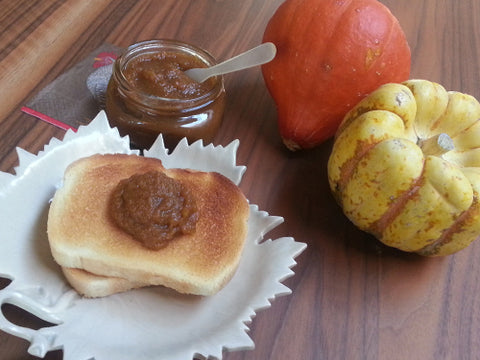Why You Shouldn't Skip Breakfast
By Cheryl Forberg
There are plenty of reasons that people skip breakfast. But there are even more reasons why they shouldn't.
"I don't like cereal."
"I'm allergic to eggs."
"I'm not hungry when I wake up."
"I don't have time."
There are plenty of reasons that people skip breakfast. But there are even more reasons why they shouldn't.
Aside from increasing mental and physical performance, a breakfast of champions can help you to achieve and maintain optimal weight and energy levels. Furthermore, what you put in your mouth (or don't) in the morning can also be indicative of your future health! Here's how the first meal of the day can affect your lifelong health:
Energy
Who doesn't want to have more energy? Whether you love working out, have an active lifestyle, or both, skipping breakfast can undermine your best efforts. Our bodies need fuel to power us through busy days and intense workouts. It all starts with breakfast. It's no surprise that studies show that breakfast eaters have more endurance and strength than breakfast skippers.
Weight Control
Some people think that skipping meals, starting with breakfast, is a great way to lose weight. That's simply not the case. Breakfast-skipping actually has the opposite effect. Holding off until noon for that first meal usually results in uber-hunger. This can lead to an out-of-control appetite when you do eat because you're so famished. That can result in both eating too fast and consuming too many calories. It also contributes to distorted hunger signals (e.g., you can't tell when you're full). Believe it or not, smaller, more frequent meals can make weight control much more likely. And researchers now believe that eating breakfast may reduce hunger later in the day too. It may also be responsible for the tendency to choose less dense (lower-calorie) foods at later meals.
Brain Power
A veggie omelette + whole grain toast = recipe for a productive morning? Yes, researchers believe that increased clarity and concentration are due in part to replenishing glucose, the brain's main energy source. Sure, glucose is sugar, but it's not quite that simple. It has something to do with a concept called the "glycemic index," or GI. According to Dr. E. Leigh Gibson of Roehampton University in London, most studies suggest that quite a small amount, about 25 grams of carbohydrate (equivalent to a slice of whole grain toast with a tablespoon of sugar-free jam) can improve performance, especially of memory. However, much more carbohydrate, especially if they're high-GI foods, (a cup of sugary cereal or a goopy cinnamon roll) may actually impair memory. Her explanation for this is that "a high carb dose provokes a big increase in cortisol, which is a stress hormone. If one is doing a challenging task, an increase in cortisol is known to impair memory." So the quality of your carbs is just as important as the quantity. Complex carbs such as whole grain breads or cereals play a key role in a healthy and balanced breakfast.
Blood Sugar Control
Regular meal timing, starting with breakfast, is important for even blood sugar and to balance the peaks and valleys of our blood sugar throughout the day. Not only does even blood sugar help prevent diabetes, it provides more energy and better long-term health (including decreased risk of heart disease).
While blood sugar levels are highly regulated, with only minor fluctuations, our food choices (and timing) definitely have an impact on this balance. Sugary drinks or high-GI (glycemic index – see note below) meals can cause more of a spike in blood sugar levels. According to Dr. Gibson, "If you fast all day, your blood sugar would only show a slight decrease over the course of the day. This is because of action of counter-regulatory hormones such as glucagon, cortisol and adrenaline, which can influence blood glucose production, storage and uptake. So one way to think of hunger is as a neuro-hormonal signal to the brain that the body is having to work at maintaining blood glucose. At the same time, outside of the brain, most tissues start to receive an increased supply of free fatty acids, as stored fat is broken down, which, unlike the brain, they can use for energy."
"If you fast all day, your blood sugar would only show a slight decrease over the course of the day. This is because of action of counter-regulatory hormones such as glucagon, cortisol and adrenaline, which can influence blood glucose production, storage and uptake. So one way to think of hunger is as a neuro-hormonal signal to the brain that the body is having to work at maintaining blood glucose. At the same time, outside of the brain, most tissues start to receive an increased supply of free fatty acids, as stored fat is broken down, which, unlike the brain, they can use for energy."
This is an elegant and complex system whose mysteries are still being unraveled. What we do know for sure is that blood sugar control is a very good thing.
Glycemic index (GI) tells you how rapidly a carbohydrate turns into glucose. This value doesn't tell you, however, how much of that carbohydrate is in a serving of a particular food. The glycemic index has been studied to see if it can help control blood sugar for people with diabetes. Though many products have begun to tout their GI on food labels, there is some controversy about how these values are measured and interpreted.
GI Range
Low GI = 55 or less
Medium GI = 56 - 69
High GI = 70 or more
What's more important is the Glycemic load (GL) -- this tool uses the glycemic index and takes the amount of available carbohydrates into account. Available carbohydrates are those that provide energy, i.e. starch and sugar, but not fiber. The glycemic load measures the effect of the glycemic index of a food times its available carbohydrate content in grams in a standard serving. More information about these tools can be found at www.glycemicindex.com.
GL Range
Low GL = 10 or less
Medium GL = 11- 19
High GL = 20 or more
Breakfast:
Cornflakes
Serving Size: 1/2 cup
Glycemic Index: 119
Glycemic load: 13
Banana
Serving Size: 1 medium
Glycemic Index: 77
Glycemic Load: 19
Doughnut, Cake
Serving Size: 4 inch
Glycemic Index: 76
Glycemic Load: 26
Plain Bagel
Serving Size: 3 oz; 1 med
Glycemic Index: 72
Glycemic Load: 36
Sugar
Serving Size: 1 Tbsp
Glycemic Index: 68
Glycemic Load: 9
Pineapple, diced
Serving Size: 1/2 cup
Glycemic Index: 66
Glycemic Load: 6
Raisins
Serving Size: 2 Tbsp
Glycemic Index: 64
Glycemic Load: 10
Honey
Serving Size: 1 Tbsp
Glycemic Index: 55
Glycemic Load: 9
Apple with Peel
Serving Size: 1 medium
Glycemic Index: 54
Glycemic Load: 9
Orange
Serving Size: 1 medium
Glycemic Index: 42
Glycemic Load: 6
Orange Juice
Serving Size: 4 oz.
Glycemic Index: 53
Glycemic Load: 6
Fat-free Milk
Serving Size: 1 cup
Glycemic Index: 32
Glycemic Load: 4
So what does a healthy breakfast look like?
A healthy breakfast should consist of a variety of foods including complex carbs, lean proteins and good fats such as olive oil or a sprinkle of almonds on your yogurt, or a few slices of avocado on your breakfast burrito.
Choose one item from at least three of the following five food groups:
Dairy:
Non- or low-fat cheese, milk, yogurt, cottage cheese or ricotta
Fruits and Vegetables:
Fresh whole fruits and vegetables (Yes, veggies at breakfast -- think omelettes or breakfast wraps!)
Grains:
Whole-grain rolls, bagels, bread, tortillas, cereals or muffins
Protein:
Eggs, lean turkey or chicken, smoked salmon
Fat:
Olive oil, nuts, seeds, avocado
No time? No excuse.
Here are some easy portable ideas:
- Bran muffin and vanilla yogurt.
- Whole grain pita sandwich with one to two slices of lowfat cheese and an apple.
- Breakfast wrap (whole grain tortilla with scrambled egg, sprinkle of cheese and salsa).
- Trail mix and 8 ounces of milk.
- Yogurt and granola.
- Multigrain bagel with a dab of cream cheese and a couple slices of smoked salmon.
- Smoothie made with high protein Greek-style yogurt.
- Peanut butter and jam sandwich on whole grain bread.
Extra tips
- When choosing bread, check out the label first. If the label says "enriched" it probably contains processed white wheat flour, meaning it's low in fiber and nutrition. Choose breads with at least three grams of fiber per serving. The first ingredient listed should be "whole" wheat or "whole grain.
- Most packaged breakfast cereals are highly processed and loaded with added sugar. Choose packaged cereals with less than five grams of sugar and at least five grams of fiber per serving.
Here is a simple recipe to add color, flavor and LOTS of antioxidants to your breakfast (or any time of day!). If you're a pumpkin pie fan, you'll love this creamy spread. Stir it in your yogurt, whip up a smoothie, spread it on whole grain toast, or add a creamy dollop to your oatmeal.
Pumpkin Butter
Yield: 3 cups; 12 (¼ cup) servings
Ingredients
4 cups Roast Pumpkin Purée (32 ounces)
½ cup Agave Nectar
2 teaspoons Ground Ginger
1 teaspoon Ground Cinnamon
½ teaspoon Ground Cloves
¼ teaspoon Ground Nutmeg
¼ teaspoon Ground Cardamom
Pinch Salt
2 teaspoons Pure Vanilla Extract
Instructions
Combine pumpkin, agave and salt in a deep 3-quart saucepan; stir well.
Bring mixture just to a boil over medium heat. Immediately reduce heat, cover slightly, and simmer until thickened, about 15 minutes, stirring frequently. (Caution: As the mixture thickens, it tends to spatter and can cause a serious burn.) Stir in spices and vanilla.
Pour into clean, sterilized jars and seal. Cool and store in the refrigerator for up to one month.
Pumpkin Factoid
The bright color of pumpkin roars that it's loaded with a powerful antioxidant, beta-carotene. Beta-carotene is a plant carotenoid, which converts to vitamin A in the body.
Nutrient Analysis: per ¼-cup serving
Calories 59
Prot 1 gram
Carb 15 grams
Total fat 0 gram
Sat fat 0 grams
Choles 0 mg
Fiber 1 gram
Sodium 4 mgs

